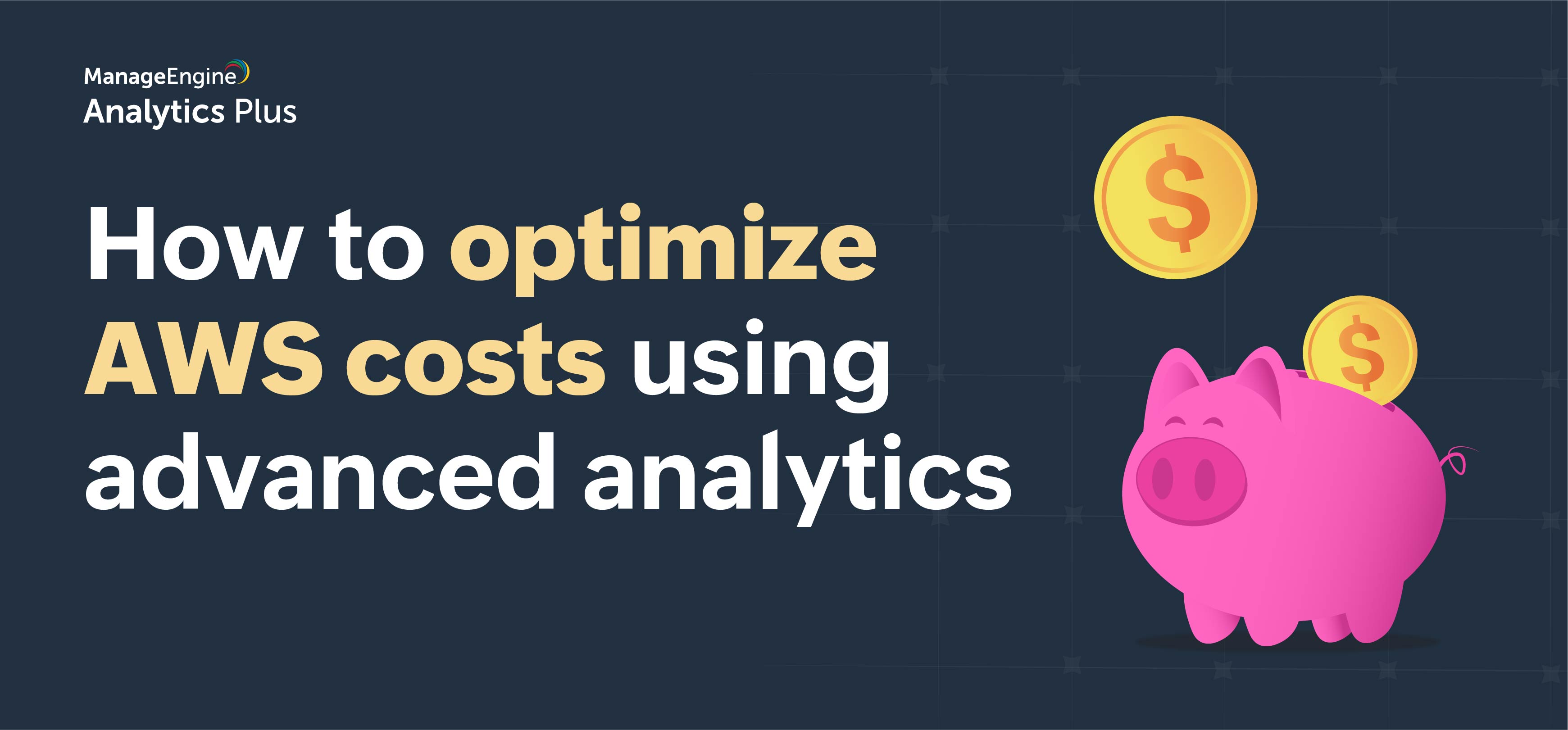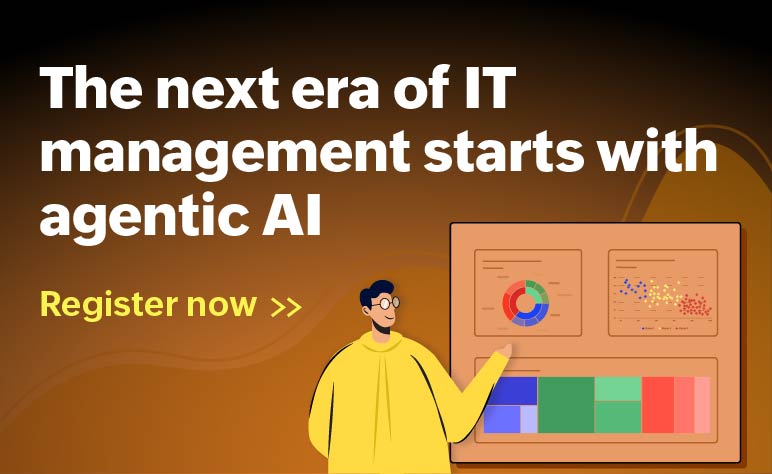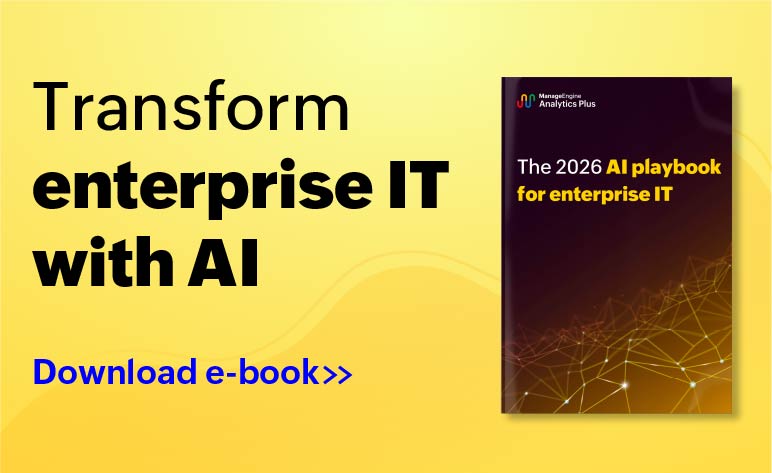- HOME
- ITSM Analytics
- Advanced analytics: Discover cutting insights that shape the future of organizations
Advanced analytics: Discover cutting insights that shape the future of organizations
- Last Updated: July 1, 2024
- 661 Views
- 7 Min Read

The sheer volume and variety of data generated by organizations today have made it difficult for business leaders to gather meaningful insights using traditional analytics alone. Besides being time-consuming and labor-intensive, traditional analytics have a serious pitfall—they do not correlate events or offer a 360-degree view of the business ecosystem. This can cost the business time, money, and opportunities. However, thanks to advanced analytics, the process of collating, correlating, and interpreting data can now be automated effectively and easily. Additionally, advanced analysis can solve complicated problems that traditional data analysis cannot. For example, take IT operations. It's one of the costliest departments within any organization. However, implementing advanced analytics across all of IT can find and fix money drains that are putting a dent in your IT budget. In this blog, we'll discuss what advanced analytics is and how organizations can benefit from it.
What is advanced analytics?
The term advanced analytics refers to a set of advanced methods and tools that can help you get the most out of your data. By leveraging advanced analytics methodologies such as predictive modeling, machine learning algorithms, cohort methodology, and pattern matching, organizations can leverage data to mitigate problems and threats and discover opportunities.
Advanced analytics vs. traditional analytics
Advanced analytics, unlike traditional analytics, can process and derive meaning from complex, unstructured, or even incomplete data. Traditional analytics is generally used to explain what's happened, whereas advanced analytics is used to explain why it happened and also predict what is likely to happen in the future. This makes advanced analytics a helpful tool IT leaders can leverage to make the key decisions that determine sustainability and growth.
What are the four types of advanced data analytics?
1. Descriptive analytics: "What happened?"
Using both current and historical data, descriptive analytics identifies trends, patterns, and correlations buried within the data. This helps users interpret whether current events are new or part of a recurring pattern. For instance, downtime is inevitable and it leaves everyone crippled with the question of "What happened?" Descriptive analytics gives you a glimpse of historical downtime trends, enabling you to spot recurring patterns or trends.

The report above shows the trend of uptime and downtime for the past five years. There's a noticeable decrease in downtime over the years.
2. Diagnostic analytics: "What is the reason behind an event?"
The diagnostic analysis examines data to discover the reasons behind an event. For instance, you've discovered a server problem that has caused downtime in your organization. There is a multitude of factors that cause a server problem—server overload, network glitches, power outages, or damaged hardware. Diagnostic analysis helps you pin down the actual reason and move on to the next step, that is, fixing it.
3. Predictive analytics: "What might and might not happen in the future?"
Predictive analysis helps forecast future trends, or potential outcomes that can help drive strategic initiatives. Forecasts could be for the immediate future, like predicting a server problem later that day, or for a longer time, like predicting your organization's IT budget for the next few years.

The report above shows an example of an IT budget trajectory report of eight years and the forecasted budget for the next four years.
4. Prescriptive analytics: "What can be done next?"
The technique of using data to decide on the best course of action is known as prescriptive analytics. Although this closely mimics the decision-making process performed primarily by humans, AI-led advanced analytics applications can offer the added benefit of context. For instance, when there are multiple alarms from networks and applications, as well as multiple incidents from end users regarding their apps or networks, it can be overwhelming for humans to get context into the problem. Advanced analytics algorithms can correlate alarm information, performance data, and incident data to identify possible causes, and present the information to humans in seconds, enabling them to decide on the next course of action quickly.
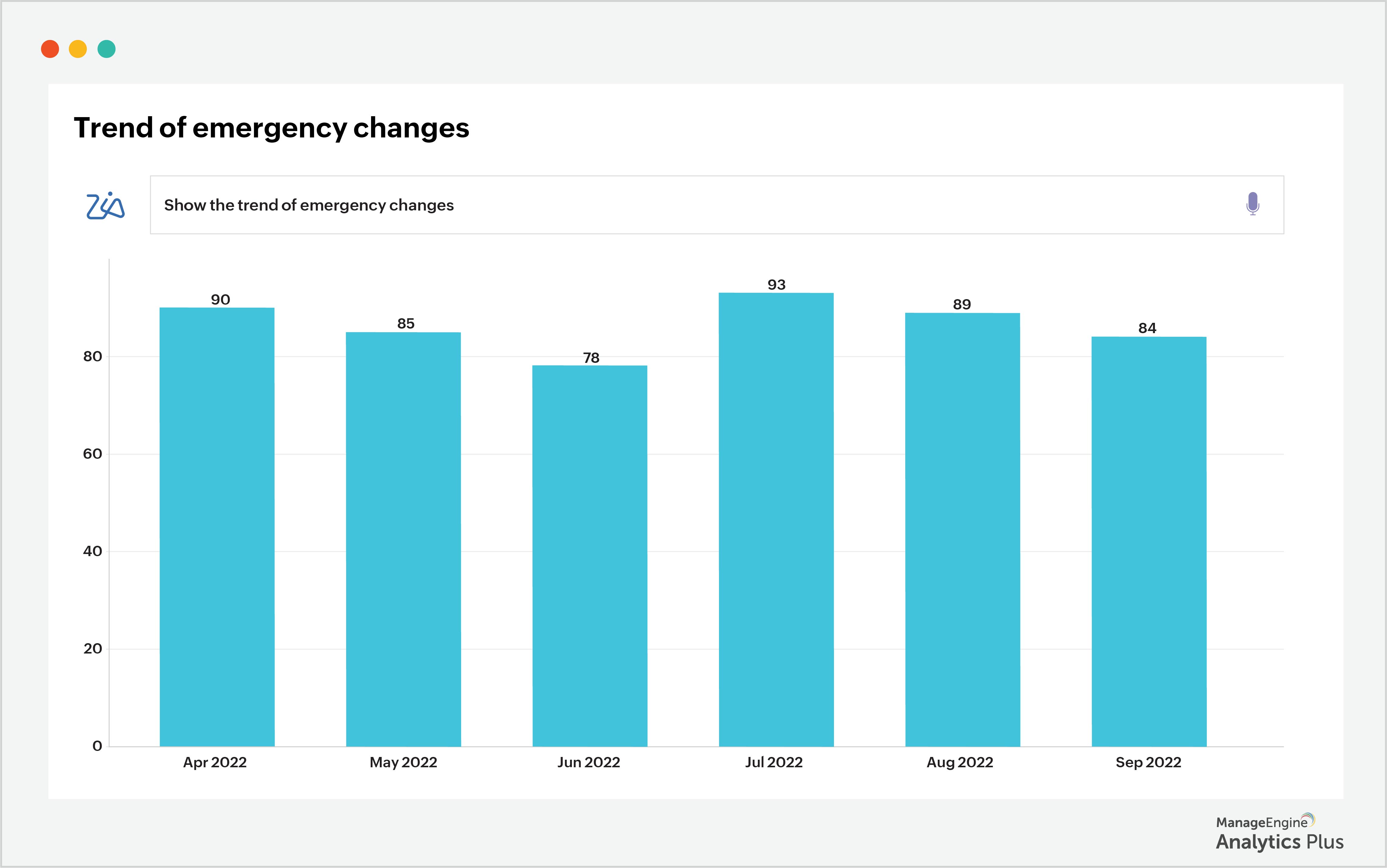
The report above, created using Analytics Plus' AI-assistant Zia, shows the trend of emergency changes over the last several months. You can obtain this report just by asking Zia questions in natural language. You can further drill down into specifics, and view the reasons for the emergency changes, as shown in the report below.

Key capabilities or techniques of advanced analytics:
There are various advanced analytics techniques, however the following five are the most critical ones:
1. Data mining:
Finding trends, patterns, and anomalies within data sets using machine learning and AI.
2. Machine learning:
A subset of artificial intelligence that's focused on creating analytics models and has a capacity for self-learning.
3. Predictive analysis:
Predictive algorithms analyze both current and historical data by factoring in trends, seasonality, and randomness to deliver accurate forecasts.
4. AI-driven analysis:
Automating data analysis, a process that is traditionally time-consuming and labor-intensive, using AI.
5. Data Visualization:
Graphical visualization of data using charts, graphs, tables, summary views, and pivots to identify trends, outliers, and patterns.
Why is advanced analytics important to IT?
Organizations are looking for creative strategies to make full use of the massive amounts of data being generated every day. However, IT data, unlike other business data, is vast, complex, and generated at a tremendous rate. This makes it difficult for organizations to process mass volumes of data and make sense of it in time to seize opportunities and evade threats. Advanced analytics enables organizations to innovate and optimize their operations to obtain a competitive edge.
What are the benefits of advanced IT analytics?
Besides enabling greater use of data and providing IT leaders with a 360-degree view into IT, advanced analytics offers the following benefits:
1. Predict the future:
With the predictive capabilities of advanced analytics, organizations can discover various opportunities and get prior warnings about threats. This enables them to stay one step ahead always.
2. Enhance decision-making:
Advanced analytics provides IT leaders with greater confidence and accuracy while making critical decisions.
3. Anticipate problems and their outcomes:
Advanced analysis is great at spotting potential problems and, based on the likelihood of the problem, it suggests the best action to be taken and enables organizations to eliminate problems even before they occur.
4. Mitigate risks:
To detect effectively and mitigate risks, advanced analytics gives organizations a clear picture of the past, present, and future. With the use of advanced data analysis' predictive skills, organizations can stay away from costly mistakes such as downtime or security threats.
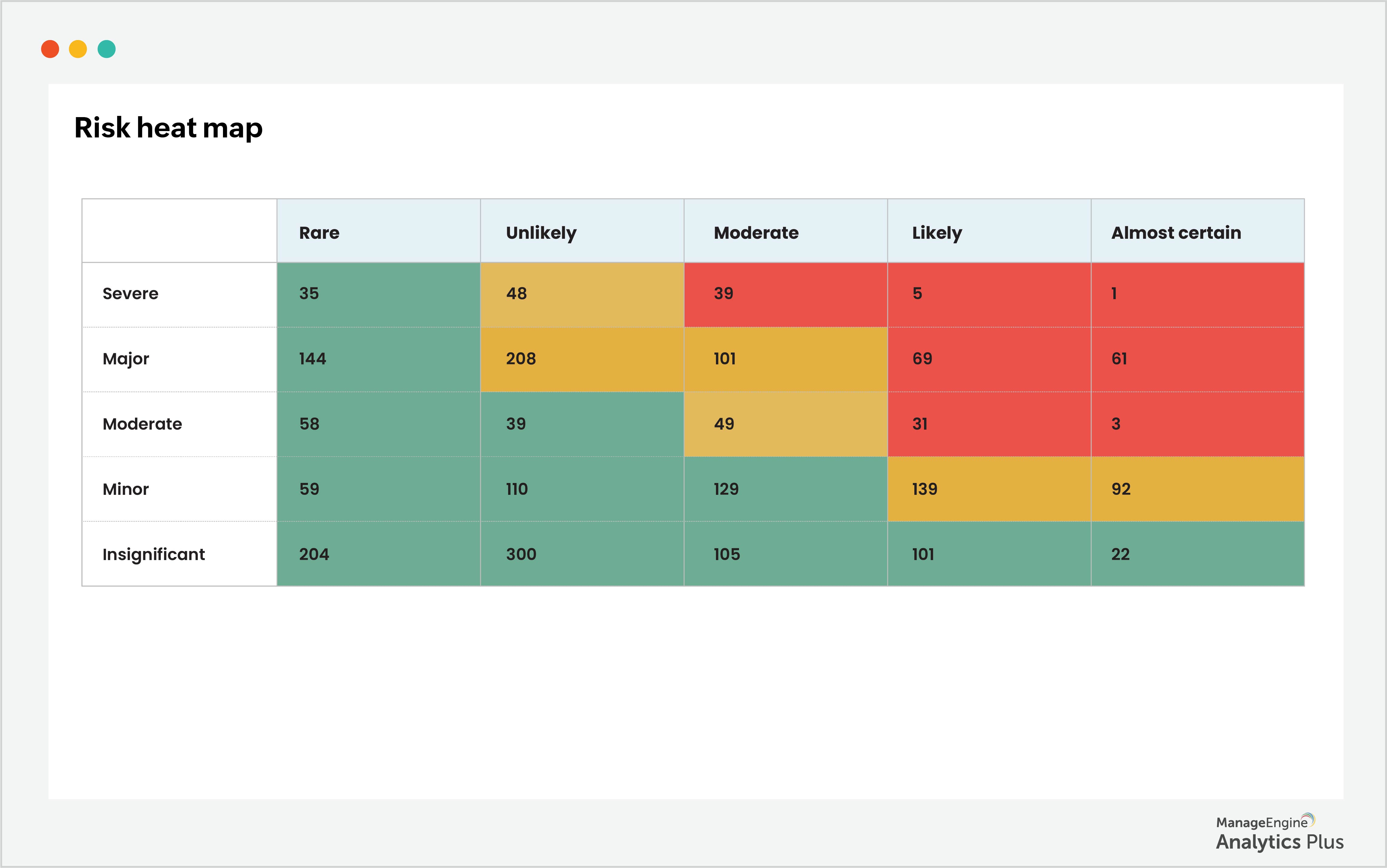
The report above shows a risk heat map of known vulnerabilities prioritized by likelihood of the threat occurring and their impact on the organization.
Use cases for advanced analytics in IT:
1. Increase employee productivity
Data-driven strategies provide IT teams with competitive differentiation, enabling them to prioritize and re-prioritize work items constantly, and trim down workflows and processes to achieve agility. This makes it possible for IT teams to ensure the maximum work gets done with an optimum amount of effort. An MIT study found that introducing advanced analytics into business operations can help increase productivity and profitability by 5-6% more YOY. One of ManageEngine's customers, Vizstone, deploys advanced analytics to streamline workflow, eliminate redundant tasks, and prioritize tickets. This enables Vizstone to increase its SLA compliance by 70%.
2. Scale IT operations efficiently
Every organization strives to serve as many end users as possible while also increasing productivity. Home Partners of America streamlines its operations with single-point access to collect data, run reports, and share insights across the organization with the help of advanced analytics. This enables Home Partners of America to scale its operations by 30%.
3. Improve end user satisfaction
Every organization strives to increase end-user satisfaction, a critical metric for increasing employee productivity and in turn, revenue. For the help desk, end user satisfaction is an important metric that reflects your help desk team's performance. ERM, an environmental sustainability consultancy firm in the UK, delivers faster support resolutions with the help of advanced analytics. ERM achieved this by getting an overarching view of its IT operations from a single console. Ultimately, this increased the customer satisfaction score from 90% to 97%.
4. Discover hidden insights
Data is full of valuable insights, and these game-changing insights can help organizations improve performance, reduce redundancies, and improve efficiency. One of ManageEngine's customers, NHS group's F4 IT services, uncovered valuable insights into its service desk operations that helped streamline the service delivery process.
5. Identify process lags and speed up incident resolution
A well-functioning help desk is essential for providing great end-user support. Unfortunately, IT teams are overwhelmed by an enormous volume of tickets, which results in slower incident resolution. As the help desk is the single point of contact for end users to get their issues addressed, a slow help desk can be catastrophic. However, by leveraging advanced analytics, organizations can identify their process lags. One of ManageEngine's customers, Lebara, deploys advanced analytics to identify process lags and speed up its incident resolution.
Conclusion
With organizations dealing with an abundance of data, advanced analytics can help make sense of it all and put it to good use—in making data-driven decisions to improve operations, cutting down costs, discovering new opportunities, spotting and stopping threats early on, improving productivity, increasing revenue, and improving customer satisfaction.
If you're looking for the right advanced analytics tool that will fit your organization's needs, check out ManageEngine's Analytics Plus, an AI-enabled business intelligence tool, custom-built for analyzing IT data.
Analytics Plus integrates with 40+ IT applications such as ServiceNow, Zendesk, Teamwork Desk, Jira Software, ServiceDesk Plus, Ivanti, SupportCenter Plus, Endpoint Central, and also offers 200+ data connectors to bring in data from business and IT applications. This enables you to unify data from multiple applications onto a single console. You can also bring in data from cloud drives such as Dropbox, Google Drive, as well as local and cloud databases, and offline sources like spreadsheets, local files, and feeds.
Try Analytics Plus for free today.
Do you want to know more about analytics for IT operations? Talk to our experts to discover all the ways you can benefit from deploying analytics in your IT.




